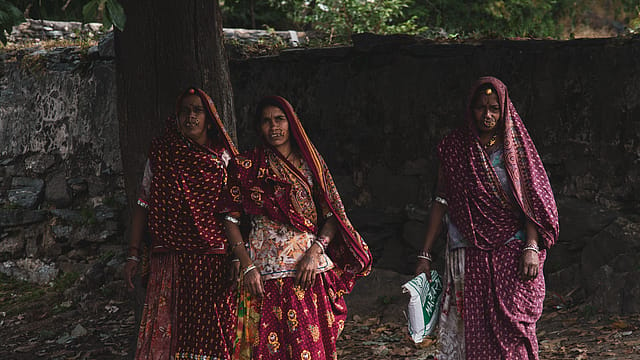Does patriarchy prevent India’s economic growth?
ADVERTISEMENT

This essay was born in two places. First, a conversation I had with a close confidant, a woman, on the process of evaluating work done by women, and second, in my horror at the news that one of India’s most vaunted tech entrepreneurs has been accused by his wife for pressurizing her for dowry.
That patriarchy is an important part of the problem which has caused a fall—I repeat, a fall—in female participation in the workforce in India through the last decade when, ironically, the country saw some of its best annual growth rates, is no secret.
Feminist economic theory has long taught us the connection between fertility rates, so-called ‘family values’ and women’s participation in economic activity. Fredrick Engels made this connection in his famous (or infamous) The Family, Private Property and the State, and among many others, I have been stirred by the thought-provoking paper Nancy Folbre wrote in 1983, Of Patriarchy Born: The Political Economy of Fertility Decisions.
At the heart of the problem is an accounting of two things—the value of the work done by women, and the patriarchal control of fertility. Modern feminism has moved from talking about women ‘being equal to’ men, to emphasising that true egalitarianism comes from women being ‘valued as women’ and not for being ‘identical to men’. This simply means that if men and women bring different attributes to the table, even often a different approach to problem-solving, then they ought to be evaluated as they are, and not in comparing how similar they could be to one another.
January 2026
Netflix, which has been in India for a decade, has successfully struck a balance between high-class premium content and pricing that attracts a range of customers. Find out how the U.S. streaming giant evolved in India, plus an exclusive interview with CEO Ted Sarandos. Also read about the Best Investments for 2026, and how rising growth and easing inflation will come in handy for finance minister Nirmala Sitharaman as she prepares Budget 2026.
But why does this exist? Well, in agrarian societies, more often than not, the role of men and women and the economic benefits each bring, are more easily understood and balanced than the society that emerged from the industrial age.
The age of machines put an economic tag to the ‘production’ brought out by men but rarely, if ever, enumerated the contribution women made in maintaining lives, and otherwise so that the industrial society could function.
One would have thought that with time this enumeration problem would get corrected. It didn’t.
Instead, the premium fell on women being exactly like men, which, as more recent ideas in feminism correctly, doesn’t really solve the problem, because, you know, men haven’t really done such a great job running the world.
Evaluating the role of women and assigning economic value to the vast benefits that women bring to society is a fundamental challenge of sustainable economics. In a country like India, where the most powerful brand video I have seen in years (funded by Royal Stag called Devi, fronted by the actor Kajol) describes in the most vivid and frightening way facts about the violence against women crisis in the country, we cannot imagine any real conversation about sustainability unless we confront what happens to women.
The scariest thing about patriarchy, especially Indian patriarchy, is that it does not reduce with education and wealth. More often than not, it, in fact, increases exponentially. The more there is education, the more money, even more ideas of ‘honour’ and ‘respect’ are only assigned to a woman’s body and fertility. Even the most educated women are often told by their educated parents that validation (from the parents, wider family, and this beast called society) comes only by conforming to the right marriage, the right production of children, and never asserting any real choice.
This is a trap. It is a trap that has confined the natural talents and ambition of millions of women in India, generation after generation, in a societal cage of approval and validation seeking, which, in fact, can never really be won.
This is why billionaire male entrepreneurs are still accused of seeking dowry from their wives. The demand is not for money, you see, it is for submission.
Things are changing—as fertility rates fall in large swathes of southern and western India (some of the most educated parts), there is a glimpse of hope that perhaps India still might be able to change its story and really tap into the egalitarianism embedded in its ancient civilization.
But it is impossible to ignore that many parts of India still remain precariously susceptible to ideas that are holding half of its 1.3 billion population from fulfilling their, and the country’s, destiny.
Views are personal.
Hindol Sengupta is also a historian and a multiple award-winning author.
